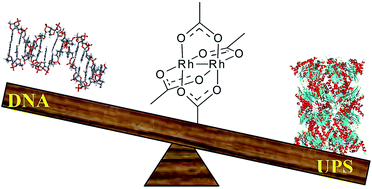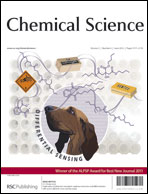Anticancer dirhodium(ii,ii) carboxylates as potent inhibitors of ubiquitin-proteasome system†
Abstract
Dirhodium(II,II) carboxylates are documented to exhibit both in vitro and in vivo anticancer properties. In literatures, DNA is a proposed molecular target of anticancer active dirhodium(II,II) compounds. Herein, we provide compelling evidences that for the dirhodium(II,II) carboxylates examined in this work (Rh2L4, where L = μ2-OOCMe RhA, μ2-OOCnPr RhB, μ2-OOCiBu RhIsoVal, μ2-OOCiPr RhIsoButyl, μ2-OOCC2H4COPh RhPCOPh or μ2-OOCC3H6COPh RhBCOPh), a prominent mechanism of action is the inhibition of ubiquitin–proteasome system (UPS). Using an unbiased connectivity map analysis, the changes in global gene expression upon treatment of cells with dirhodium(II,II) acetate and butyrate are similar to that of proteasome inhibitors. Cellular studies revealed that dirhodium(II,II) butyrate at submicromolar concentrations exerts a strong inhibition of UPS, attributable to impairment of proteasomal proteolysis and deubiquitinating enzyme activities. The UPS inhibitory potencies of the dirhodium(II,II) carboxylates also exhibit strong correlation with the cytotoxicities. Of note, the dirhodium(II,II) carboxylates inhibit UPS at concentrations that were at least 10-fold lower than that required for eliciting DNA damage as determined by comet assay. While cisplatin, oxaliplatin and carboplatin readily induce significant double strand break as indicated by γ-H2AX induction, the dirhodium(II,II) carboxylates do not. Our findings revealed that the dirhodium(II,II) carboxylates exhibit potent UPS inhibitory property which is linked to their cytotoxic actions.


 Please wait while we load your content...
Please wait while we load your content...